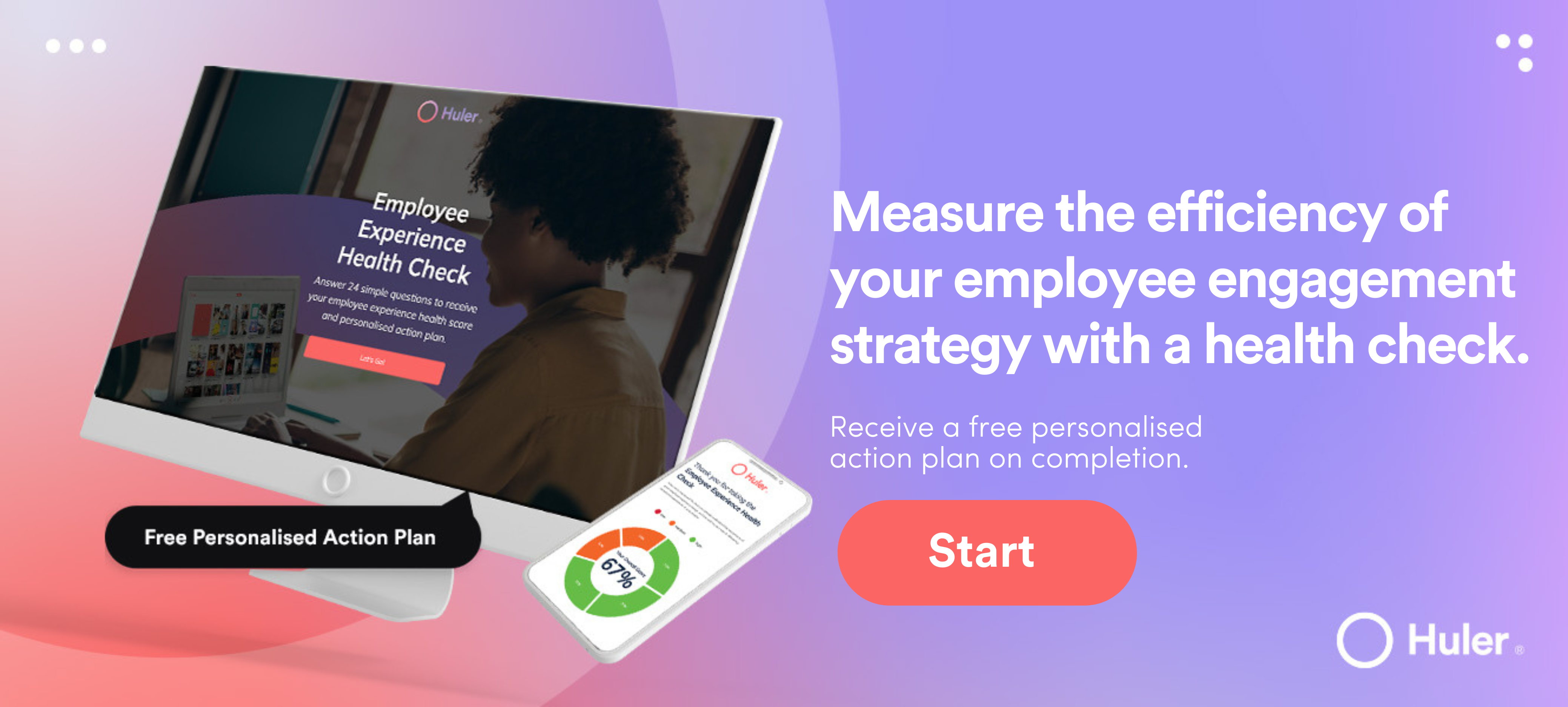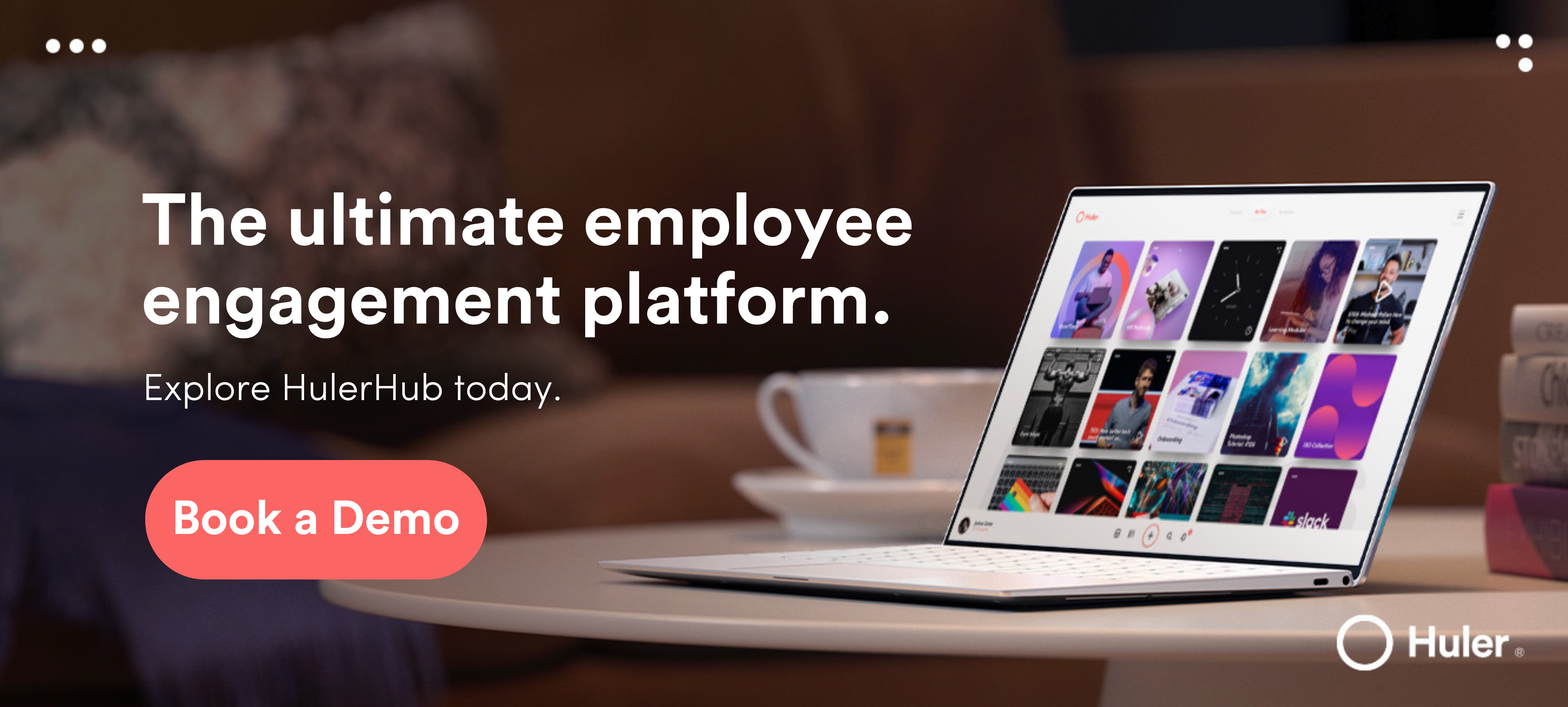Employee engagement has very recently become a HR buzzword we can’t stop talking about. Why? Well, a boatload of research has shown that high levels of employee engagement leads to tangible results for businesses. But there’s something else too. A whopping 66% of employees the world over are disengaged. Worse still, here in the UK the current employee engagement levels sit at a lacklustre 8%.
Employee engagement, or lack thereof, is an ongoing issue that can spell disaster for organisations in such a competitive landscape. So understanding what it is, why it is important, and how you can take control of it and make it work for your business is crucial.
The only problem is that, much like workplace culture, employee engagement is pretty hard to define. In a 2009 review, MacLeod & Clarke found over 50 definitions for it! So, while engagement in the workplace is a hot topic, the lack of a concrete definition can make understanding and measuring it a lot harder.
That being said, a thorough understanding of employee engagement as a concept can give us some clues as to what we should be looking for from employees in the workplace, and the strategies we can undertake to increase and enhance it across the board.
What Is Employee Engagement?
The jury is still out on a concrete definition of employee engagement. As a concept, it’s pretty nebulous, which can make it hard to grasp. Perhaps the best way to get an understanding of employee engagement is to look at several definitions and then pull them all together into one larger definition that covers all the bases.
The most popular explanation comes from Utrecht University, where occupational psychologists suggest that employee engagement is more of a state of mind in which employees show vigour, dedication, and absorption in one’s work. Simply, employees care. And because they care, they love their job and do it well.
In the paper ‘Engaging for success: Enhancing performance through employee engagement’ MacLeod & Clarke spoke to a number of people about what they felt the term employee engagement meant to them. Here are just a few of the answers:
“Engagement is about creating opportunities for employees to connect with their colleagues, managers and wider organisation. It is also about creating an environment where employees are motivated to want to connect with their work and really care about doing a good job…It is a concept that places flexibility, change and continuous improvement at the heart of what it means to be an employee and an employer in a twenty-first century workplace.” (Professor Katie Truss)
In this definition, employee engagement means feeling connected to an organisation as a whole. Employees are driven to perform in their roles because they care about what they are doing, and this motivation is caused by the environment.
“[Employee engagement] is a positive attitude held by the employee towards the organisation and its values. An engaged employee is aware of the business context, and works with colleagues to improve performance within the job for the benefit of the organisation. The organisation must work to develop and nurture engagement which requires a two-way relationship between employee and employer” (Institute of Employment Studies)
Employee engagement is also how an employee responds to their organisation and everything within it, be it positively or negatively.
Good employee engagement happens because the people within an organisation are fully informed, listened to, fulfilled and aligned with the company values and culture. Poor employee engagement happens in conditions where the opposite happens and employees can’t see how they fit into the overall picture.
Suggested reading: How can you tell if your business has a good company culture? Find out by reading our blog: ‘Signs of a Great Company Culture‘.
What Does An Engaged Employee Look Like?
So far, so conceptual. Of course, it’s all good and well knowing what employee engagement is in an abstract sense…but what does it look like? Well, we’ve done the research for you.
Imagine every single one of your employees showed up to work every day fully present and excited to create incredible things. That is what an engaged employee looks like.
Employee Engagement: An Employers Perspective
From an employers standpoint, employee engagement manifests itself through high productivity levels, a sense of empowerment, a good attitude to work, involvement in social aspects of the business, and a clear understanding of why the person shows up to work every day and what value they bring to the wider business.
But it can’t happen in a vacuum. In order to elicit better engagement, HR teams and leaders should put plans in place to foster an environment that brings about engagement. It is the job of an employer to gain a commitment from employees that hinges on so much more than their salary.
Employers who prioritise employee engagement:
- Act consistently in line with your company culture
- Give employees a voice
- Listen and act on employee feedback (from surveys, exit interviews, 1:1 meetings, forums etc)
- Communicate openly and transparently
- Offer opportunities for growth and development
- Recruit teams aligned with company values
- Recognise the hard work and achievements of employees
- Facilitate positive working relationships
- Encourage a good work-life balance
- Include employees in the development of future plans and strategy
Employee Engagement: An Employees Perspective
For employees, engagement means they are genuinely interested and passionate about helping their company succeed. Because they feel valued and taken care of, they actively seek out ways in which they can help which drives them to be more innovative, creative, and collaborative.
Since they genuinely have the company’s interests at heart, highly engaged employees are also more likely to jump on board with any strategic changes without resisting and are more likely to try out new processes and systems.
Engaged employees are:
-
- Proud of their work
- Loyal
- Company advocates
- Motivated to go the extra mile
- Productive
- Open to sharing their ideas and feedback
- Working towards common goals
- Communicative
- Respectful
- Supportive of colleagues and management
- Proactive about problem solving
- Resilient
- Enthusiastic about growing and developing
Common Employee Engagement Myths
To further clarify what exactly employee engagement is, it’s helpful to look at what it’s not.
Employee Engagement Does Not Equal Employee Happiness
While employee happiness and mental wellbeing is important, it’s not the same as employee engagement. Low employee engagement does not necessarily mean an employee is unhappy. They could be very happy, but not productive or in alignment with the overarching company goals.
This distinction is important because the things that make employees happy (such as games rooms, beanbags, and free massages) don’t necessarily lead to better engagement – although they can contribute to your mental health at work strategy!
Employee Engagement Is Not Employee Satisfaction
Employee satisfaction and true employee engagement should be viewed separately. Don’t get us wrong, employee satisfaction is great but employee engagement goes deeper than that.
An employee can be satisfied with their job but not motivated to go the extra mile. They might feel okay about their job but lack a sense of loyalty to their employer or understanding of the common goals within an organisation.
Simply measuring job satisfaction does not give organisations any kind of insight into how their employees are behaving. And that’s what lies at the heart of employee engagement. It is behaviour brought about by actions, culture, environment, attitudes and values.
Low Employee Engagement Is Not The Same As Burnout
Disengagement and burnout don’t go hand in hand. It’s actually the opposite. Employees who are highly engaged are very dedicated to their work, and their commitment and motivation can often result in them working longer hours or taking on more responsibility.
While this sounds great from a business perspective, it’s crucial to provide mental health and wellbeing support that mitigates the risk of burnout and provides your teams with adequate ways to switch off and recharge.
What Next?
Now you know what employee engagement is and what it looks like, it’s time to delve a bit deeper and look at why employee engagement is important, it’s benefits and the ways in which employee engagement tools best enhance it.
Here at Huler, we are passionate about all things employee engagement. We’re avid believers that creating personalised, enjoyable employee experiences at work is key to boosting engagement regardless of what industry you are in.
HulerHub, our innovative people-first employee engagement platform, is designed to help employees to feel better connected to their workplace and give them room to express themselves at work while boosting their productivity.
Sounds good? We thought so! If you’re feeling ready to shake up your employee engagement strategy, book a demo to get started and see how we can help you with all things employee engagement!







